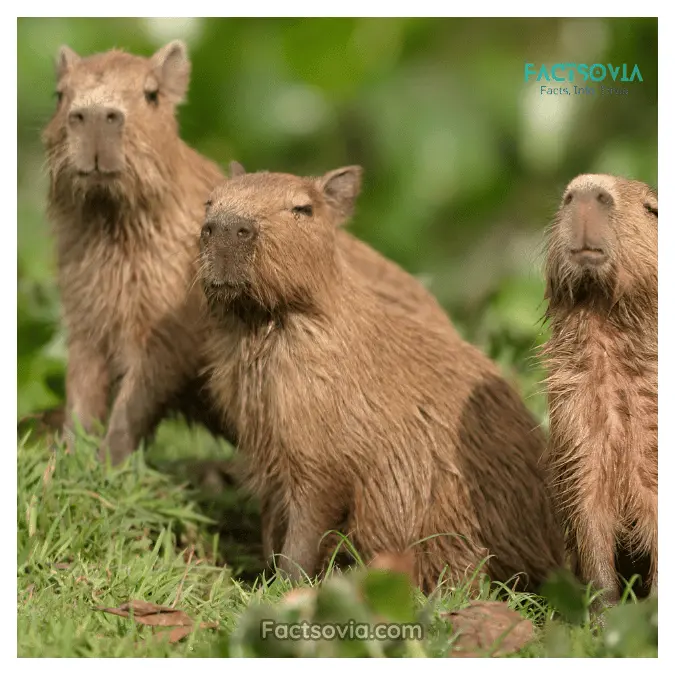We use affiliate links to run our site. When you buy through links on our site, we may earn an affiliate commission, without any added cost to you. Learn more
Capybaras are the largest rodents in the world, native to South America, and are known for their semi-aquatic lifestyle. They are social animals and often live in groups near water bodies such as rivers, lakes, and swamps.
Capybaras are excellent swimmers and can hold their breath for up to five minutes underwater. They are also known to enjoy taking baths, which can help them regulate their body temperature and keep their skin healthy.
Capybara Size Comparison: How Big Is A Capybara
Do Capybaras love to Swim with Oranges?
Capybaras do not love to swim with oranges. but they are known to enjoy the scent of oranges during their baths, which can help create a calming and soothing environment for them.
The Japanese tradition of the yuzu bath, which involves adding floating yuzu fruit to the water, has become popular among capybaras in the country’s zoos.
The aroma of yuzu, which is similar to that of oranges, has been suggested to be beneficial in reducing stress and promoting relaxation for the capybaras. In captivity, capybaras are sometimes fed oranges because they cannot produce vitamin C on their own, and oranges are a good source of this essential nutrient.
However, there is no evidence to suggest that capybaras specifically seek out oranges to swim with or that they have a preference for swimming with oranges.
Do Capybaras Eat Oranges?
While capybaras are known to enjoy eating oranges and other fruits occasionally, their main diet consists of plants, grasses, and leaves. Oranges provide a good source of vitamins and minerals for capybaras, and their high fiber content helps with digestion and keeps their digestive systems healthy.
In the wild, capybaras may eat fallen oranges from trees to supplement their diet with vitamin C.
Capybaras and their love for water
Capybaras are semi-aquatic animals and they spend a significant amount of time in water. They are excellent swimmers and can hold their breath for up to five minutes underwater.
Capybaras also have webbed feet that help them swim efficiently, and their eyes, ears, and nostrils are located on the top of their head, allowing them to see, hear, and breathe while swimming.
Being social animals they often live in groups near water bodies such as rivers, lakes, and swamps and use water as a means of escape from predators and to regulate their body temperature.

Capybaras are also known to take mud baths, which can help them keep their skin healthy and protect them from parasites.
Where does a Capybara live?
Capybaras and their love for baths
Capybaras also enjoy taking baths, which can help them regulate their body temperature and keep their skin healthy. They often take mud baths, which can help them keep their skin healthy and protect them from parasites. Capybaras also use water baths to relax and reduce stress.
Capybaras have a Keen Sense of Smell:
Capybaras are renowned for their exquisite sense of smell and their deep affinity for scents. Their keen olfactory abilities allow them to experience the world in a unique way, as they are constantly drawn to the captivating aromas that surround them.
These fascinating creatures have an inherent love for the vast array of scents that exist in their environment, making them truly remarkable and intriguing animals.
Why Are Capybaras So Friendly?
The Diet of a Capybara:
Capybaras are herbivores and primarily feed on grasses, aquatic plants, and fruits. In captivity, they are sometimes fed oranges because they cannot produce vitamin C on their own, and oranges are a good source of this essential nutrient. However, this is not directly related to their swimming or bathing behavior.
Conclusion
Capybaras have a special bond with water, and their aquatic lifestyle is an essential aspect of their behavior. Their love for water goes beyond just swimming; it also includes taking baths and enjoying certain scents. While capybaras are sometimes fed oranges in captivity, this is not directly related to their swimming or bathing behavior.
These semi-aquatic animals are fascinating creatures that continue to amaze researchers and captivate the hearts of many people around the world. So, let’s continue to learn more about these amazing animals and their unique behaviors.
Sources:
- https://animalworldfacts.com/why-do-capybaras-like-oranges/
- https://www.reddit.com/r/Eyebleach/comments/bx84ks/capybara_chilling_with_oranges/
Amazon and the Amazon logo are trademarks of Amazon.com, Inc, or its affiliates.
